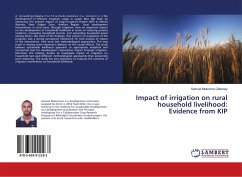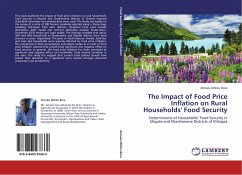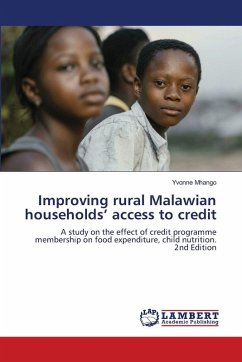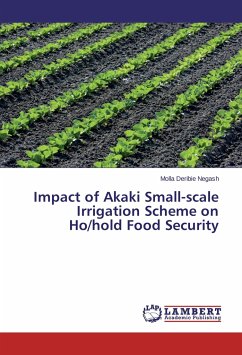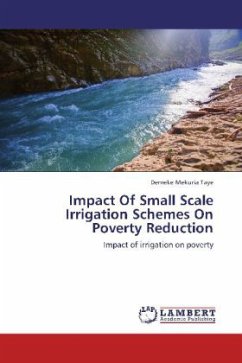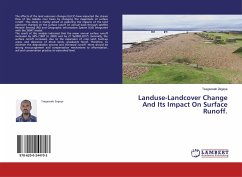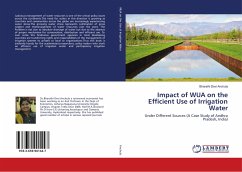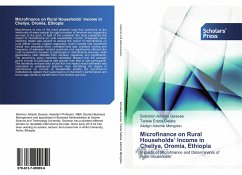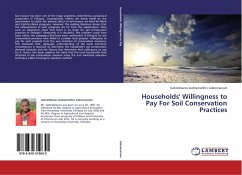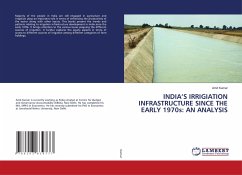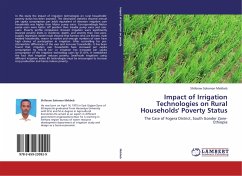
Impact of Irrigation Technologies on Rural Households' Poverty Status
The Case of Fogera District, South Gonder Zone- Ethiopia
Versandkostenfrei!
Versandfertig in 6-10 Tagen
32,99 €
inkl. MwSt.

PAYBACK Punkte
16 °P sammeln!
In this study the impact of irrigation technologies on rural households poverty status has been assessed. The descriptive statistics showed annual per capita consumption per adult equivalent of diversion irrigation user households was higher than Motor pump users. Correspondingly Motor pump users were better off position than treadle pump users and non-users. Poverty profile comparison showed irrigation users significantly lowered poverty levels in incidence, depth, and severity than non-users. Logistic regression model result showed that farmers who are literate, male headed households, neare...
In this study the impact of irrigation technologies on rural households poverty status has been assessed. The descriptive statistics showed annual per capita consumption per adult equivalent of diversion irrigation user households was higher than Motor pump users. Correspondingly Motor pump users were better off position than treadle pump users and non-users. Poverty profile comparison showed irrigation users significantly lowered poverty levels in incidence, depth, and severity than non-users. Logistic regression model result showed that farmers who are literate, male headed households, nearer to market and enough numbers of oxen have high chance of participation in irrigation. After controlling for pre-intervention differences of the user and non-user households, it has been found that, irrigation user households have increased per capita consumption by 816.74 birr i.e irrigation has increased per capita consumption of the irrigation technology users by 21.01%. It established the fact that irrigation reduces poverty. Small-scale irrigations using different irrigation water lift technologies must be encouraged to increase crop production and hence reduce poverty.



